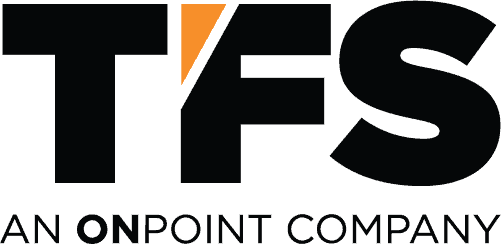 It’s a mixed forecast for material handling stakeholders. On the one hand, prices are improving and equipment wait times are coming down. On the other, economic hardships and labor challenges continue to cloud the future.
It’s a mixed forecast for material handling stakeholders. On the one hand, prices are improving and equipment wait times are coming down. On the other, economic hardships and labor challenges continue to cloud the future.
How can facilities stay ahead? To find out, we went straight to Jason Laws, who estimates he and his team have spent countless hours talking with 10,000 material handling executives. In the process, Laws, TFS’s Market Development Manager, has not only gained deep insights into the issues facing facilities, he has crafted solutions that increased uptime and saved money.
What are the top issues clients bring up over and over? Read on to find out—and see what solutions Laws and his team recommend.
1. Inflation: While inflation has recently decreased, additional costs continue to burden most businesses.
“The word that really resonated in the last half of 2022 is inflation,” Laws said. “And facilities’ budgets often didn’t account for the amount of inflation they experienced last year. That left them asking: ‘How can I do the things I need to do for my facility? How can I continue to move fast and have a safe, good experience for my employees and stay under budget despite inflation?'”
Potential solution: Material handling is among the top costs at any facility and ranks even higher at a high-velocity facility. That means it’s ripe for improvement. In addition, it’s often an untapped area for savings because it’s such a specialized area.
“Material handling is a top three or four cost at a high velocity facility after rent and labor, and in our experience it’s often an overlooked source of savings.” adds Laws. “People often don’t realize that power and maintenance can be 70 percent of that cost. That’s why material handling can be a great way to combat what’s happening with inflation.”
2. The never-ending labor crunch: Given all the news headlines, it’s probably not a shock that Laws and his team constantly hear about the challenges of attracting and retaining effective employees.
“A big component of the labor shortage is the large cohort of older people who have spent their entire careers working in these manufacturing and distribution facilities but are starting to retire,” says Laws. “Compounding this, younger generations are more inclined to job hop—and many of them kind of ‘rethought work’ when new and sometimes different opportunities cropped up during the pandemic. Ultimately, that turnover has impacted manufacturing and distribution centers in terms of having a consistent workforce.”
With unemployment at record lows, employers have more workforce gaps than available people. Fortunately, there are strategies to help win the war for talent.
Potential solutions: According to Laws, the first method is probably not wholly unexpected. The businesses with the best retention rates pay well, delineate clear career progression, and boost worker safety. These methods remain tried and true for a reason.
The second solution is less traditional but has the same overall aim. Many facilities are exploring automation to fill labor gaps and improve retention by making the work easier, more efficient, and safer.
“Many folks in our industry are looking into automation to enhance complex functions like fleet management or power management,” Laws said. “The idea is to make essential ‘human’ jobs more attractive and boost efficiency in manufacturing and distribution workplaces.”
Yes, automation technologies come with an upfront price tag and other, less tangible costs like onboarding and change management. However, you’ll need to weigh those costs against potential gains. For example, automation can often take over the dirty and dangerous jobs that are hard to fill, while guided systems can boost safety and uptime. And remember that you can start small and expand as you see success.
3. Stressful lead times: Supply chain disruptions may be fading, but many facilities are still waiting months for critical equipment.
“We’ve had countless conversations with facilities about forklift parts that break down or maybe some other power or mechanical issue,” said Laws. “Whatever the cause, it leaves them feeling helpless because they can’t get a replacement when needed.”
Not to mention, waiting is only sometimes an option. Many companies turn to costly rentals when forklifts go down or leases expire.
Potential solutions: Laws always advises clients to get ahead of potential downtime with proactive maintenance.
“When it comes to extending the life of a forklift, for example, a proactive power management program is beneficial in terms of preventing downtime in the first place,” Laws said. “It always helps to be in a more proactive state of mind than reactive.”
4. Increased complexity: In just the last few years, many facilities switched from a model that involved shipping oversized pallets to a few retail clients to picking individual items that must be sent as quickly as possible. E-commerce can be a competitive advantage, but it requires greater capacity and more people to manage increased volumes, faster timelines, and higher customer demands.
Even material handling operations without e-commerce models are becoming more complex. As a result, facilities must find ways to keep up with demand while maintaining safe and productive operations.
Potential solution: Explore ways to streamline or offload non-critical functionality, especially if increased demands and labor shortages have already stretched your employees to the limit.
“We hear a lot about how complex things are getting in the material handling space, and our response is ‘Where can you simplify?'” said Laws. “What if you handed a non-core aspect of your business to a third party who specializes in that and can assume that responsibility?”
In many cases, outsourcing is an effective option. Don’t underestimate the value of an “outsider perspective,” which can shed new light on different and better ways to do things.
The common theme that runs through these four main issues is that material handling executives feel constant pressure to do more with less. Unfortunately, material handling executives need to be prepared for this crunch to continue.
That means thinking differently and approaching material handling as an untapped opportunity to combat inflation and improve your business in particularly trying times.

